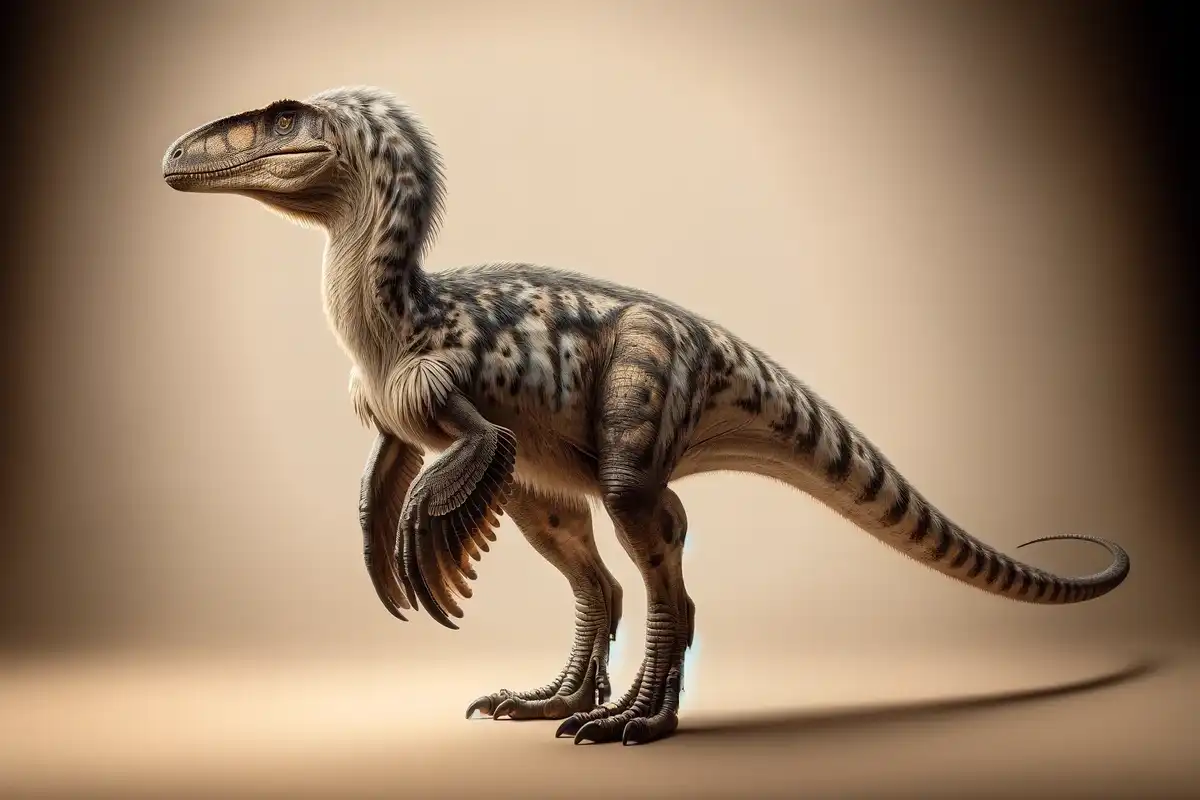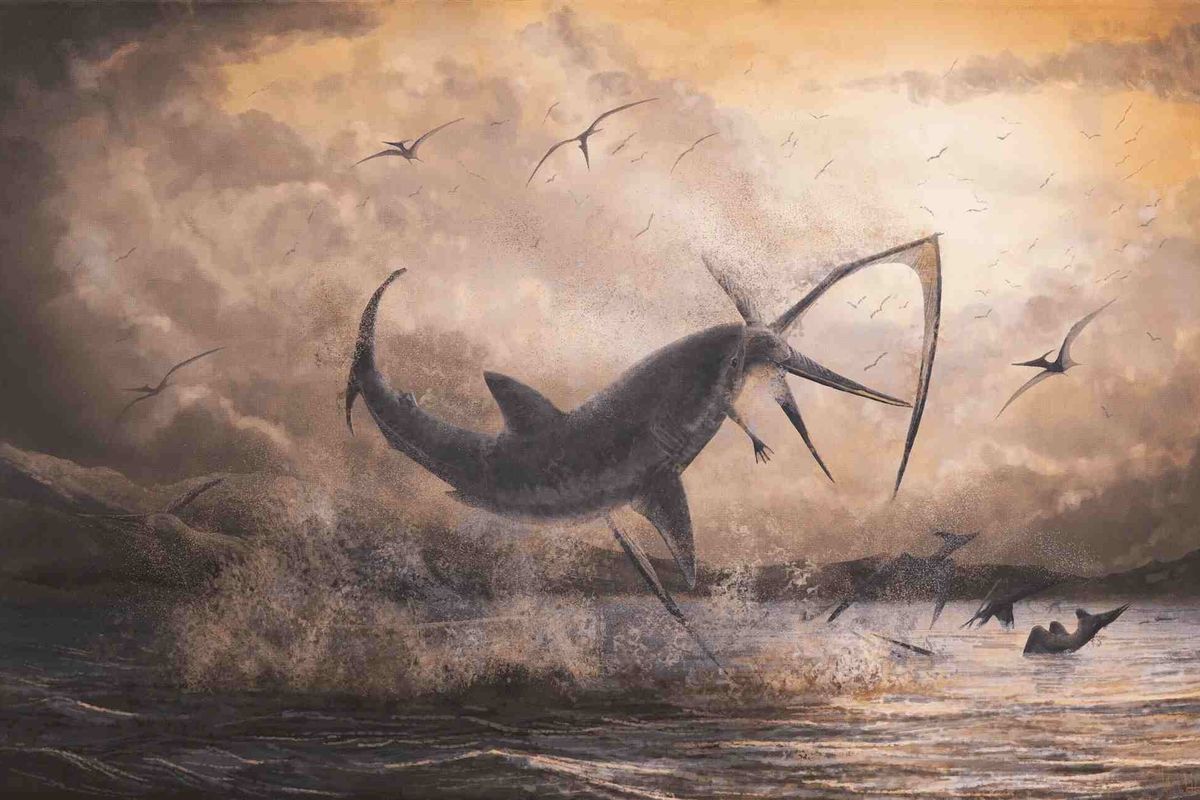About Luca Demetriou
Experienced in writing and sub-editing, Luca holds a Bachelor's in English Literature and Drama from the University of Birmingham, where he served as the culture editor at Redbrick Paper. He is currently pursuing a Master's in Performance: Design and Practice at the University of the Arts in London, showcasing his passion for the arts, performance, and history. With a keen interest in traveling, Luca enjoys exploring new cultures and experiencing diverse perspectives.
Family interest
In house speciality
Education
Qualifications
- Bachelor of Arts specializing in English and Drama
- Master of Arts specializing in Performance: Design and Practice
Recent Work
Megaraptor Magic: Cool Facts for Kids!
The Megaraptor, whose name aptly means 'giant thief', stood out as a formidable megaraptoran theropod dinosaur of both significant stature and remarkable predatory features; most notably, its distinctive, sickle-shaped claws and powerful limbs.
These awe-inspiring creatures once traversed the diverse and vibrant lands of South America throughout the Upper Cretaceous Period (90-85 million years ago), leaving an indelible mark on the fabric of vertebrate paleontology.
Their existence showcases not only the diversity of life that thrived during the Late Cretaceous Period but also the intricate dynamics of prehistoric ecosystems. Within the annals of natural history, detailed studies of juvenile specimens, alongside more substantial findings from adult versions of this large theropod, unveil a profound evolutionary story.
These paleontological treasures illustrate how the Megaraptor's unique anatomical characteristics, such as their razor-sharp, sickle-shaped claws, robust hind legs, and potentially even feather-like integuments. These features enabled them to assume the role of apex predators within their ecological niche.
Far from mere relics of the past, these discoveries provide a richer understanding of the Megaraptor, painting a vibrant picture of a bird-like dinosaur whose reign over its territorial domain was as impressive as it was formidable, characterized by exceptional predatory skills that cemented its position at the top of the food chain.
Fun Garden Lizard Facts For Kids
Stepping into the garden could lead to a captivating encounter with the elusive garden lizard, a species rich in diversity and known by several names including Calotes versicolor, oriental garden lizard, crested tree lizard, and the Indian garden lizard.
This intriguing reptile is renowned for its remarkable capability to adapt its dietary habits in response to the ecosystem it inhabits.
Particularly during the mating season, these lizards engage in a spectacular transformation, where males showcase luminescent colors with shoulders that blaze in bright orange, and throats that burn a fiery red, signaling their readiness to court.
The garden lizard’s dexterity in avoiding predators is impressive, indicative of their strategic survival tactics which have been honed through evolution. They thrive across a variety of landscapes, from dense forests to the more human-dominated urban gardens, showcasing their unparalleled adaptability within the reptile dominion.
This ability to flourish in diverse environments speaks to the lizard's resiliency and the complexity of its behavioral adaptations. As you explore the existence of this adaptable reptile, you will uncover the intricate aspects of its life cycle, social behavior, and environmental interactions that contribute to the species' overall survival and success in the wild.
Fun Cretoxyrhina Facts For Kids
Cretoxyrhina mantelli, widely recognized as the Ginsu Shark, ranked among the top predators in marine ecosystems during the Late Cretaceous Period (about 100.5-66 million years ago). Despite an often sparse fossil record, the remains found, including a partial but revealing collection of calcified elements beyond just teeth, provide valuable insights into the existence of this paramount lamniform shark.
With a specialized dentition featuring anterior teeth for securely grasping prey and larger, serrated posterior teeth on both the upper jaw and lower jaw for cleaving flesh, this shark was well-equipped for its role as an apex predator.
These teeth, unearthed in more complete skeletons, reveal a shark with cutting abilities that draw parallels to the hunting strategies employed by many sharks, including those that are fast-swimming like the modern great white.
Although typically placed within its family, Cretoxyrhinidae, the possibility of other taxonomic placements has been discussed, highlighting the varied and complex nature of shark evolution. The combination of skeletal features and powerful jaws provides a testament to the Ginsu Shark's status as a formidable hunter that dominated the prehistoric oceans.
55 Face Piercing Names And Types For Body Jewelry Fans
Piercing names for the face usually tend to be similar to piercing ideas related to the other parts of the body.
If you are someone who is looking forward to wearing a lip ring or multiple lip rings, then you need to understand that the pain is a small price to pay for getting the desired appearance.
Some of the popular face piercings are Monroe piercing, Medusa piercing, barbell piercing, lip piercing, bar piercing, curved piercing, cheek piercing, and several others.
69 Cassidy Names, Meaning, Nicknames And Alternatives
Are you on the hunt for popular Cassidy names and their meanings? Searched everywhere but couldn't find a single proper middle name for your child?
Worry not, because here are some very famous middle names, nicknames, and not to mention better alternatives for the name Cassidy for your curly-haired daughter. Here are some Cassidy names, their meanings, nicknames, as well as alternatives.
Pick any of the names from the numerous options and bless your baby or your pet with a lovely name. Cassidy is derived from the popular Irish surname that means 'descendant of Caiside' Cassidy, is a unisex name, which means 'curly-haired' or 'clever' and is a very popular name among girls.
Want to know more about famous people named Cassidy? Read on for some famous baby names inspired by the term Cassidy.
Why Do Cats Sleep At The Foot Of The Bed? Should You Let Them?
Cats have been estimated to sleep at the foot of the bed at least 15 hours a day where it is in the most uncomfortable spot- not for them but their human!
Even though your cat sits on top and judges everyone in the house, these creatures love to cuddle up with their human on the same bed for hours as their way of showing affection for them. Our feline friends love to be close to the owners that give them maximum affection and provide the most for them.
Most people notice that the cat owners that feed, water, and clean their litter-sand the most, are the ones whose feet these animals may choose to sleep on. Albeit either waking them up or leaving no room to stretch the legs for the human.
Sleeping and being near their owners gives the kitty a sense of security and safety. Cats also have a knack for sleeping next to their humans to protect them from any harm that may come and wake them up of any threat, thanks to their superior survival instincts.
All this increases the love in the bond between the cat and the cat owner.
The cat owner's feet become the permanent bed for a cat to get all the affection and warmth they crave from their human. However, is this the only reason why cats sleep near your feet or the foot of your bed?
Let’s find out by reading the remaining article! To know more about feline instinct, please read about why cats fight and why cats eat plants.






